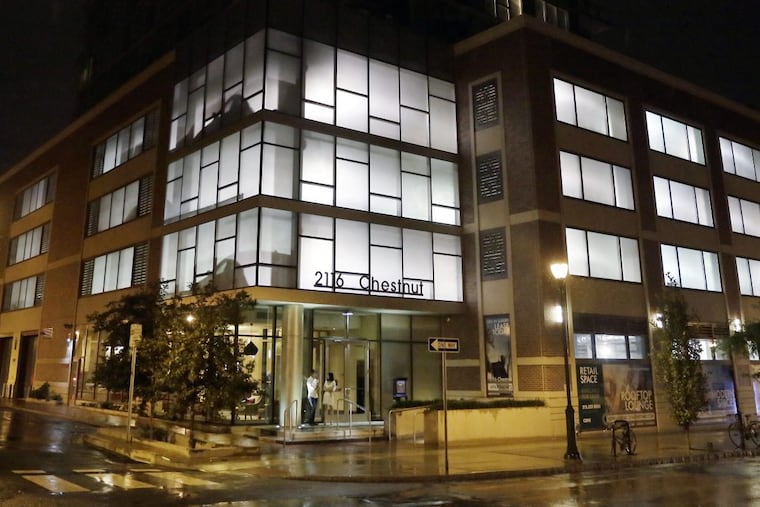Which comes first: the developers or the rich people who gentrify the neighborhood? | Brain Trust
Slowing down gentrification by regulating out housing options might be a futile exercise.

The issue: Everyone is familiar with the early signs of gentrification — Starbucks, bay windows, Whole Foods, dog parks. A developer builds one or two new fancy buildings in a neighborhood and after a few years you can’t recognize the place anymore. It almost seems as if developers can choose to gentrify a certain area. But who came first: the developers or the rich people who gentrify the neighborhood?
To answer that question, Leah Platt Boustan, professor of economics at Princeton University, and her colleagues looked at the relationship between condos and gentrification in American cities, specifically if converting rental units to condos accelerated the process. The paper, published last month by the National Bureau of Economic Research, looks at whether regulations were effective at preventing condo conversions — and whether that impact could slow down gentrification.
The bottom line: Developers respond to demand, they don’t create it. Even successfully limiting a housing option that is in high demand — condos — was not enough to slow down gentrification.
A bit of history: America glorifies homeownership. But up until the 1960s, most Americans had to choose between owning a home in the suburbs or renting in the city. The source of that tradeoff was that, as Boustan says, “it’s pretty tough to own a slice of the building,” so unless you could purchase the entire building, you were more likely to rent a unit than own. That changed in the 1960s with the advent of condominiums. Boustan explains: “The condominium building itself has a shared ownership structure over the common space.”
Until 1961, the ownership structure of the condo did not exist in the mainland U.S. Once Congress authorized condos, Boustan says, they “spread like wildfire.” In high-density cities, apartment buildings were being converted to condos. Some cities, including Philadelphia, enacted legislation to protect renters from conversions — requiring notification, grace periods for tenants, right of first refusal for current tenants to buy the condo, and even temporary bans on conversions.
The question: The main question in the analysis is whether more condo conversions led to more gentrification (defined in this study as neighborhoods becoming more affluent, with higher education levels, and whiter). “We don’t think that anyone cares, per se, about condos,” Boustan says. “They care about condos because of the type of people that would live in them, or what it might do to the neighborhood.”
To answer these question the researchers developed a data set of the 100 largest U.S. cities that includes share of condos over time in the city core and the suburbs, changes in demographics, and renter protections.
Boustan and her colleagues needed to set up their data as if it was an experiment — two groups, one gets a treatment and the other one doesn’t. They did that by using the fact that some cities enacted rental protections and some didn’t, and compared the average level of gentrification in each type of city. If rental protections are effective, there would be fewer condo conversions in the core of cities that enacted them. If living in a condo is a high driver of demand for rich people, then in protectionist cities, those people would be less likely to move to the core (because of fewer condos) and more likely to move to the suburbs — and the city’s core would experience less gentrification.
The researchers found that regulations to slow down condo conversions work. “If you make it more difficult for developers to convert rental properties to condos, they’ll spend their time doing something else.” But as Boustan says, most people don’t really care about the share of condos in the housing stock — they care about what more condos mean to a neighborhoods, often assuming it means more gentrification. Yet the second analysis showed that slowing condo development did not slow gentrification. More simply: “Condos do not seem to affect gentrification.”
Why does this matter to Philly? While Philadelphia doesn’t have a ton of condos, the bigger takeaway of the study is critical to Philadelphia: Trying to control gentrification by regulating features of the housing supply seems to be futile.
Last spring, Council member Kenyatta Johnson introduced a bill to ban bay windows and balconies from two rapidly gentrifying neighborhoods in his South Philadelphia district. Aside from maintaining facades, one motivation for the ban might be to slow down gentrification by eliminating features that are in high demand by gentrifiers. But if limiting the ability to become a homeowner and not a renter did not deter gentrifiers — as the condo study shows — it is hard to imagine that regulating a housing feature would do the trick.
The takeaway: Demand for a neighborhood is much more complex than any one housing option. The study provides important guidance for the lawmakers and advocates in Philadelphia who are concerned about gentrification, its pace, and its adverse effects (such as displacement). While regulating development type has its own merits, that’s probably not an effective way to discourage affluent people from moving into a specific neighborhood.
Brain Trust is a biweekly column that looks at how new research affects Philly. Ideas? Suggestions? Want to get alerts when a new Brain Trust is published? Email Abraham Gutman at agutman@inquirer.com.